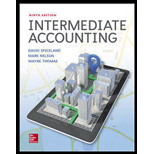
Derivatives: Derivatives are some financial instruments which are meant for managing risk and safeguard the risk created by other financial instruments. These financial instruments derive the values from the future value of underlying security or index. Some examples of derivatives are forward contracts, interest rate swaps, futures, and options.
Hedging: This is the business deal entered into, by a company to produce exposure or coverage over the exposure caused by the existing deal. In simple terms, this is the transaction which produces gains to cover the losses produced by existing transaction.
Fair value hedge: If the company uses any derivative to cover the risk due to fair value changes of asset, liability, or a commitment, the derivative is classified as fair value hedge. This type of hedge focusses to control the risk due to future price changes.
Foreign currency hedge: A multinational company faces the risk due to changes in foreign currency rate, when the transactions of its foreign operations are denominated in foreign currency, and such transactions require settlements through translation. The derivative used to hedge such type of foreign currency risk is designated as foreign currency hedge.
To indicate: The type of hedge against the activity given
Want to see the full answer?
Check out a sample textbook solution
Chapter A Solutions
INTERMEDIATE ACCOUNTING (LL) W/CONNECT
- Continental Manufacturing uses a standard cost system in which manufacturing overhead is applied to units of product based on standard direct labor hours. During April, the company used a denominator activity of 40,000 direct labor hours in computing its predetermined overhead rate. However, 42,000 standard direct labor hours were allowed for the month's actual production. If the fixed manufacturing overhead volume variance for April was $4,000 favorable, then the total budgeted fixed manufacturing overhead cost for the month was $_.arrow_forwardCan you solve this general accounting problem using accurate calculation methods?arrow_forwardPlease given correct answer for General accounting question I need step by step explanationarrow_forward
- Please explain the solution to this general accounting problem with accurate explanations.arrow_forwardCan you explain the correct methodology to solve this financial accounting problem?arrow_forwardPlease explain this financial accounting problem by applying valid financial principles.arrow_forward
- I need the correct answer to this financial accounting problem using the standard accounting approach.arrow_forwardHow can I solve this financial accounting problem using the appropriate financial process?arrow_forwardI want to this question answer for General accounting question not need ai solutionarrow_forward

 AccountingAccountingISBN:9781337272094Author:WARREN, Carl S., Reeve, James M., Duchac, Jonathan E.Publisher:Cengage Learning,
AccountingAccountingISBN:9781337272094Author:WARREN, Carl S., Reeve, James M., Duchac, Jonathan E.Publisher:Cengage Learning, Accounting Information SystemsAccountingISBN:9781337619202Author:Hall, James A.Publisher:Cengage Learning,
Accounting Information SystemsAccountingISBN:9781337619202Author:Hall, James A.Publisher:Cengage Learning, Horngren's Cost Accounting: A Managerial Emphasis...AccountingISBN:9780134475585Author:Srikant M. Datar, Madhav V. RajanPublisher:PEARSON
Horngren's Cost Accounting: A Managerial Emphasis...AccountingISBN:9780134475585Author:Srikant M. Datar, Madhav V. RajanPublisher:PEARSON Intermediate AccountingAccountingISBN:9781259722660Author:J. David Spiceland, Mark W. Nelson, Wayne M ThomasPublisher:McGraw-Hill Education
Intermediate AccountingAccountingISBN:9781259722660Author:J. David Spiceland, Mark W. Nelson, Wayne M ThomasPublisher:McGraw-Hill Education Financial and Managerial AccountingAccountingISBN:9781259726705Author:John J Wild, Ken W. Shaw, Barbara Chiappetta Fundamental Accounting PrinciplesPublisher:McGraw-Hill Education
Financial and Managerial AccountingAccountingISBN:9781259726705Author:John J Wild, Ken W. Shaw, Barbara Chiappetta Fundamental Accounting PrinciplesPublisher:McGraw-Hill Education





